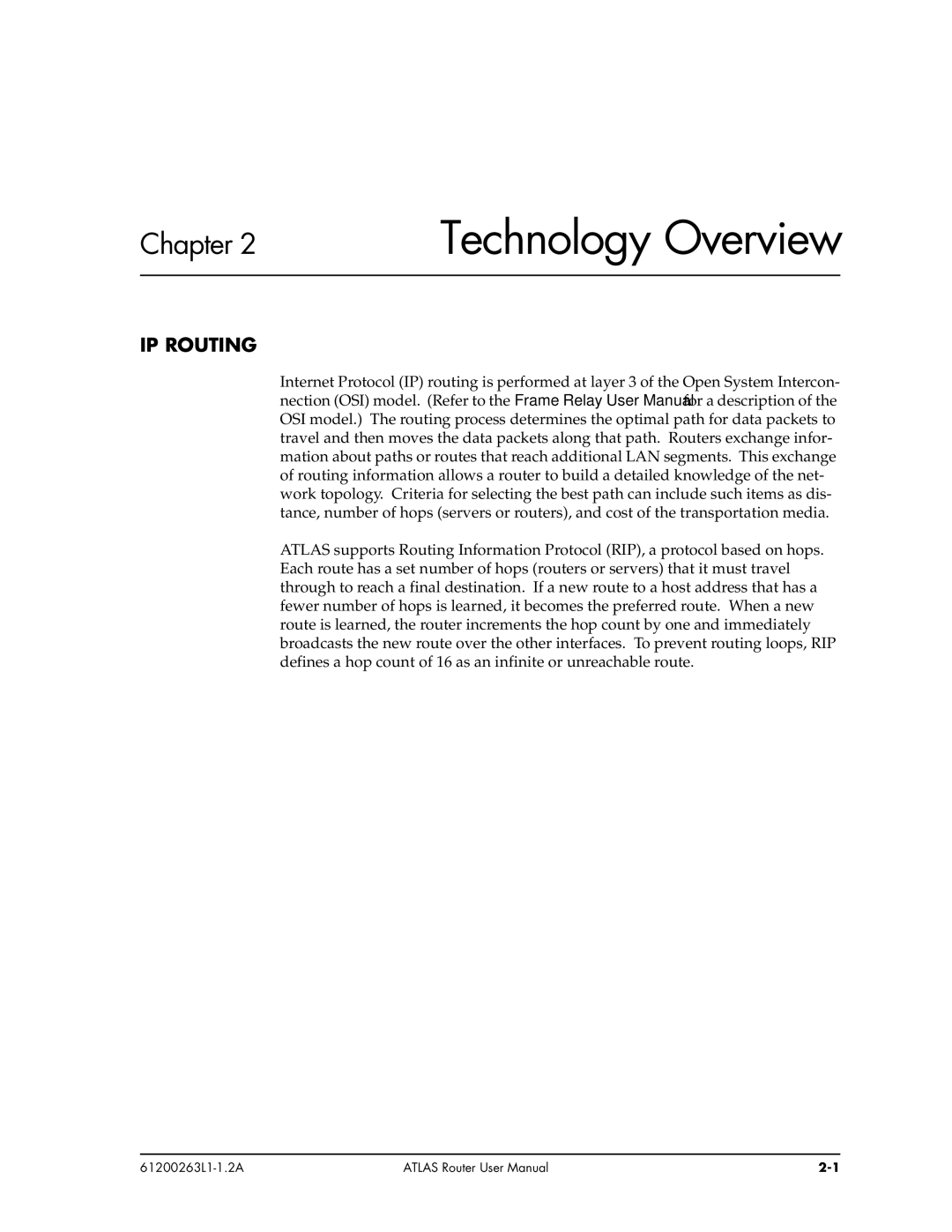Chapter 2 | Technology Overview | |
|
|
|
IP ROUTING
Internet Protocol (IP) routing is performed at layer 3 of the Open System Intercon- nection (OSI) model. (Refer to the Frame Relay User Manual for a description of the OSI model.) The routing process determines the optimal path for data packets to travel and then moves the data packets along that path. Routers exchange infor- mation about paths or routes that reach additional LAN segments. This exchange of routing information allows a router to build a detailed knowledge of the net- work topology. Criteria for selecting the best path can include such items as dis- tance, number of hops (servers or routers), and cost of the transportation media.
ATLAS supports Routing Information Protocol (RIP), a protocol based on hops. Each route has a set number of hops (routers or servers) that it must travel through to reach a final destination. If a new route to a host address that has a fewer number of hops is learned, it becomes the preferred route. When a new route is learned, the router increments the hop count by one and immediately broadcasts the new route over the other interfaces. To prevent routing loops, RIP defines a hop count of 16 as an infinite or unreachable route.
ATLAS Router User Manual |
